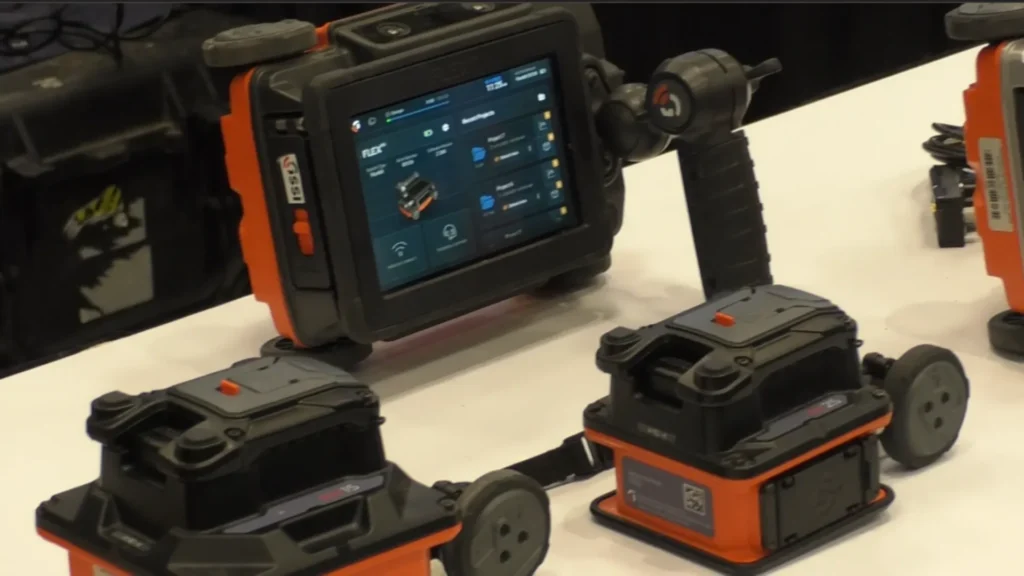GSSI strengthens development of GPR systems with applied technology
During the PANNDT trade fair, Jan Kesik, Territory Manager in Canada for Geophysical Survey Systems Inc. (GSSI) shared with the Inspenet team his vision on the present and future of GPR systems, a crucial technology in the field of non-destructive inspections. From its strategic position in the Canadian market, Kesik explained how the company continues to set the standard with innovations such as FlexMode and PaveScan, while strengthening the technical training of users through its academy.
GSSI, based in Nashua, New Hampshire, has consolidated its global leadership in ground penetrating radar (GPR) and electromagnetic induction equipment. Its technology has applications ranging from civil works and archaeology to transportation and mining. In Kesik's words, the objective of its participation in PANNDT is "to connect with the nondestructive testing market in Canada, North and South America.
Technological advances in terrestrial radar
Since its inception, the company has been recognized for its ability to anticipate market needs; the company was the first to develop GPR models for manual use, facilitating mobility in complex terrain and urban areas.
One of the most representative innovations is FlexMode, a unique feature that allows three-dimensional scans of concrete without the need for a physical grid. This advance has proven especially useful in rapid inspections of structures, increasing the accuracy of analysis and reducing operating times.
Another notable development is PaveScan, a GPR system designed to continuously measure asphalt density and porosity. Kesik notes that GSSI's R&D team is currently working intensively on the evolution of this technology, which has already been adopted by transportation departments and compaction machinery manufacturers.

Expanding industrial applications
GPR systems are establishing themselves as key tools in industries that require detailed subsurface knowledge without resorting to excavation or invasive methods. According to Jan Kesik, the sectors currently generating the greatest demand for GSSI are utility locating and concrete scanning, where accurate detection of pipes, cables and structural reinforcement is critical.
In addition, the transportation and surface geology market has shown sustained growth, driven by mining projects, infrastructure works and land surveys. In these contexts, the aforementioned systems allow obtaining detailed maps of the underlying layers, supporting engineering decisions and risk mitigation.
Kesik also mentions that there are emerging opportunities in sectors such as oil, gas and renewable energy, where the ability to perform non-destructive analysis is increasingly valued for safety and operational efficiency.
Vocational training: the GSSI Academy's commitment
One of the pillars that complement the company's technology is its training academy, known as GSSI Academy. This educational platform provides technical training to users of its GPR systems, both in data interpretation and equipment operation.
“GPR is highly interpretive,” Kesik explains. “So it's essential that customers know what they're doing.” GSSI offers free access to its training programs for the first two years of the warranty period, which includes classroom courses in various regions of North America.
This approach ensures that professionals using the technology are prepared to obtain reliable results and clearly communicate their findings to end clients.
Technical validation through strategic alliances
To maintain the quality and reliability of its products, the company collaborates with academic institutions, professional associations and government agencies. In the case of PaveScan, for example, they have established links with transportation departments and companies specializing in asphalt compaction to validate the system's performance in real-world environments.
These partnerships not only ensure that the company's solutions are aligned with the highest technical standards, but also provide key feedback for the development of new functionalities.
In fields such as archaeology and forensic research, collaboration with scientific associations makes it possible to explore new applications of GPR systems, extending their scope beyond traditional uses.
A look into the future of ground penetrating radar
With solutions that combine high-performance hardware and specialized software such as RADAN7 or GeoLytics, Geophysical Survey Systems Inc. continues to consolidate its role as a leader in the development of GPR systems for subsurface analysis. Jan Kesik's vision reflects a company committed to innovation, professional training and cross-industry collaboration.
From concrete scanning in urban buildings to road density analysis to archaeological exploration, GSSI's GPR systems are redefining the way we understand what's going on beneath the surface. As Kesik concludes, “If you're looking for something buried, we probably have the equipment to help you.”
For more content on PANNDT 2025, visit our YouTube channel and our LinkedIn profile.
Source: Inspenet.


